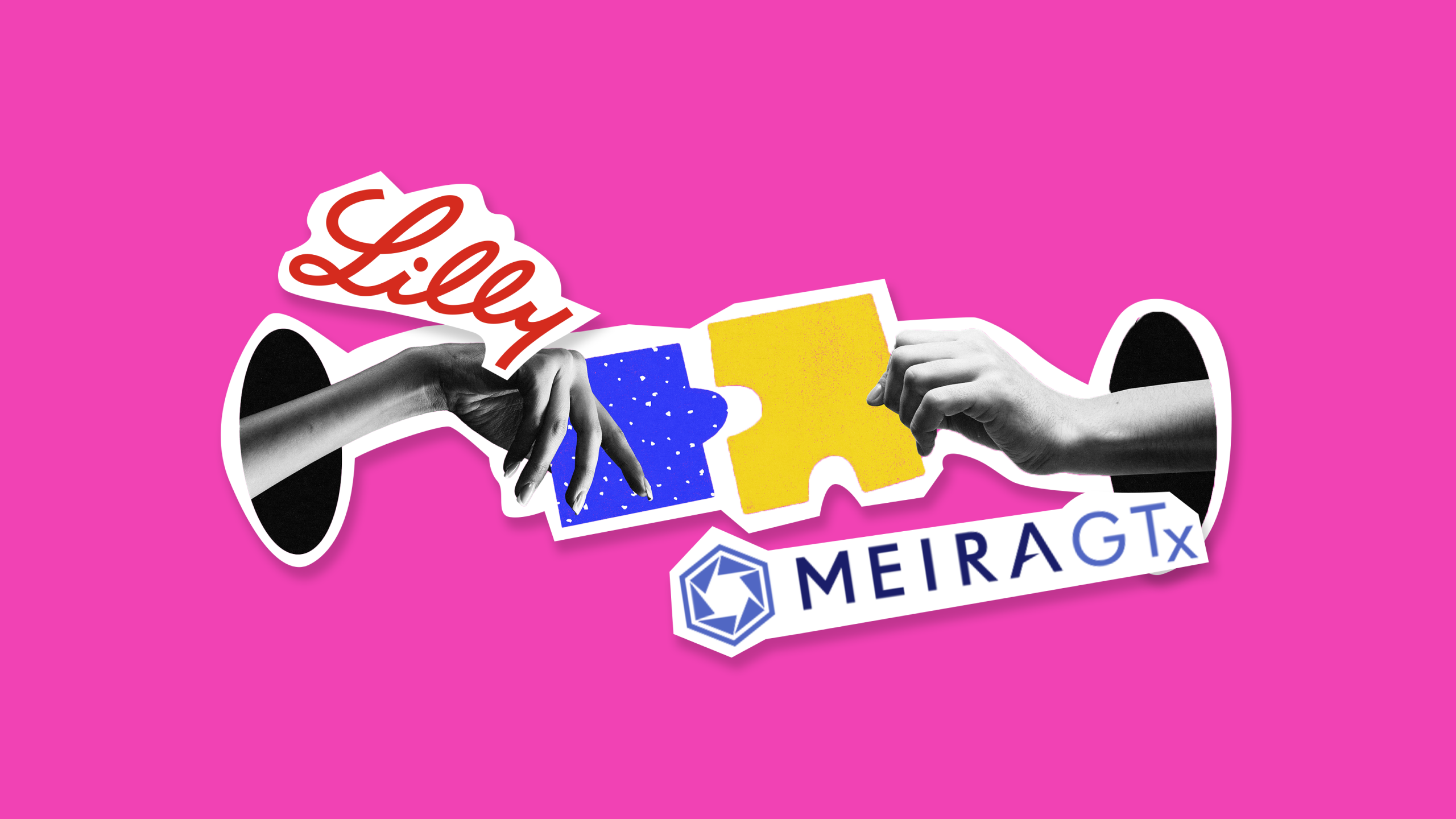Eli Lilly bets big on the future of gene therapy for vision restoration.
Eli Lilly is making another bold move in the gene therapy space, this time the company is setting its sights on restoring vision. The pharmaceutical giant has inked a $475 million licensing deal with the UK-based biotech firm MeiraGTx, marking its second major investment in the ophthalmic care gene therapy.1
The said agreement allows Lilly to have exclusive global rights to AAV-AIPL1, an experimental gene therapy made to treat Leber congenital amaurosis type 4 (LCA4), a rare inherited eye disorder that causes severe vision loss from birth. Lilly will pay MeiraGTx $75 million upfront, with the potential for over $400 million dollars in the milestones payments, plus royalties once any product will be approved.
Lilly’s group vice-president of molecule discovery, Andrew Adams, shares, “Ophthalmology is an emerging area of interest for Lilly. We are excited to partner with MeiraGTx to bring transformative treatments to patients around the world suffering from eye diseases, starting with AAV-AIPL1, which has shown the unprecedented ability to restore vision in children who were born legally blind.”
READ MORE: Gene Therapy Shows Promise for AIPL1-Associated Retinal Dystrophy in Children
Fighting childhood vision loss with gene therapy
The AAV-AIPL1 targets mutations in the AIPL1 gene, a particular protein that is vital to the retina’s ability to sense light. Without it, the eye’s photoreceptors will fail to function properly, leading to early blindness.
A recent non-randomized clinical study held in the United Kingdom and published in The Lancet, revealed that the therapy showed encouraging results where 4 out of 11 children showed measurable improvements in visual acuity, and all participants demonstrated some vision-related and developmental gains.2
According to MeiraGTx, the results were strong enough to support preparations for a regulatory submission in both the United Kingdom and United States. The company said it is now finalizing applications for the Medicines and Healthcare products Regulatory Agency (MHRA) and the U.S. Food and Drug Administration (FDA).3
READ MORE: From Rare to Repair: Inherited Retinal Disease Therapies Advance at Speed
Expanding beyond a single gene therapy
While AAV-AIPL1 is the headline of the deal, the partnership between Lilly and MeiraGTx goes deeper. This team up will include access to MeiraGTx’s broader genetic technologies–among them are intravitreal capsids, AI generated promoters for specific retinal cells, and riboswitch technology, a platform that allows in-body control of gene and protein expression.
Furthermore, it signals a strategic shift for Lilly, positioning it as a contender in the fast-evolving field of ophthalmic gene therapy.
READ MORE: Inherited Retinal Diseases and Ocular Trauma in Children: How to Fix for the Future of Sight
Lilly’s pipeline in gene therapies
The MeiraGTx collaboration isn’t Lilly’s recent bet on restoring vision. Last October 2025, the company spent $261.7 million to acquire Adverum Biotechnologies (California, United States), which is developing an intravitreal gene therapy for wet age-related macular degeneration (AMD).
Taken together, Lilly’s two ophthalmic acquisitions total more than $736 million, symbolizing an accelerated push into eye health. The combined investments also strengthen its gene therapy pipeline, adding to its growing list of deals and collaborations in the wider genetic medicine field.
Beyond ophthalmology, the drugmaker has been on the wider genetic medicine spree this year. Last April, the company signed a $1.4 billion licensing deal with Sangamo Therapeutics (California, United States) for its neurology-targeting gene therapy programs. The following months saw two more gene therapy expansions– the May acquisition of Rznomics (Seognam, South Korea), an RNA-based gene therapy developer, and the June purchase of Verve Therapeutics (Boston, MA, United States) for $1.3 billion, strengthening its gene therapy capabilities.
READ MORE: FDA Grants Priority Review to Idebenone for Leber Hereditary Optic Neuropathy
The takeaway
If successful, the AAV-AIPL1 therapy could mark one of the most meaningful advances in inherited retinal disease treatment to date. For children who are born legally blind because of AIPL1 mutations, even small gains of vision could drastically change their lives for the better.
As Lilly and MeiraGTx move closer to regulatory submissions, the partnership highlights a shared goal: to turn once-experimental science into practical, life changing medicine.
For now, Eli Lilly’s latest deal underscores one thing–its willingness in investing in treatments for the eyes.
Editor’s Note: This content is intended exclusively for healthcare professionals. It is not intended for the general public. Products or therapies discussed may not be registered or approved in all jurisdictions, including Singapore.
References
- Yahoo Finance News. Available at: https://finance.yahoo.com/news/eli-lilly-keeps-ophthalmic-gene-180149954.html Accessed on November 11, 2025
- Michaelides M, Laich Y, Wong SC, et al. Gene therapy in children with AIPL1-associated severe retinal dystrophy: an open-label, first-in-human interventional study. Lancet. 2025;405(10479):648-657.
- Form 10-Q for Meiragtx Holdings PLC filed 08/14/2025. Available at: https://investors.meiragtx.com/static-files/f72cbd4e-ac7d-4e82-b000-9ad36d37ce75 Accessed on November 11, 2025.
